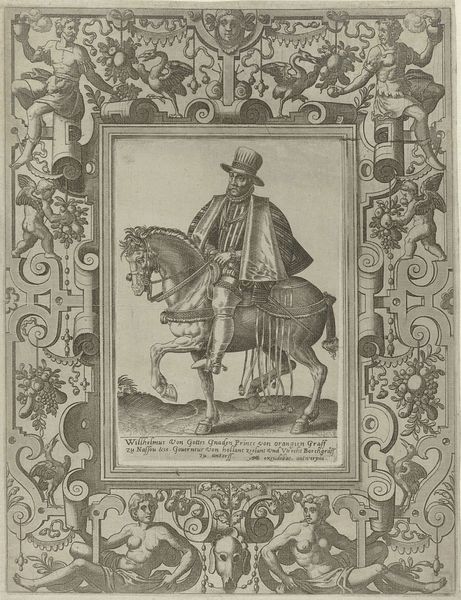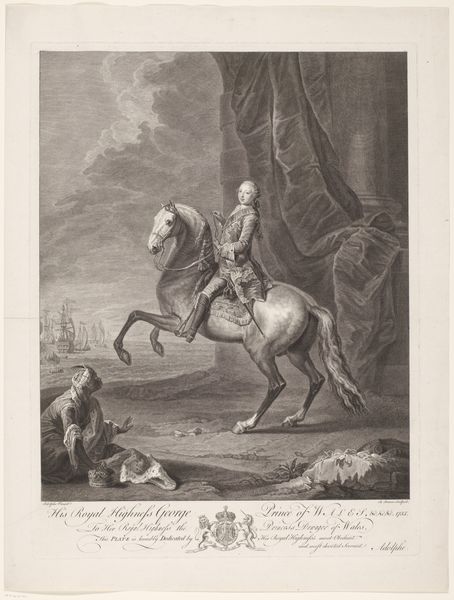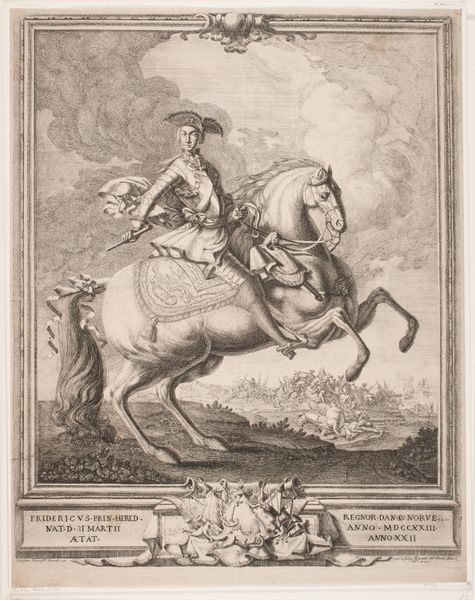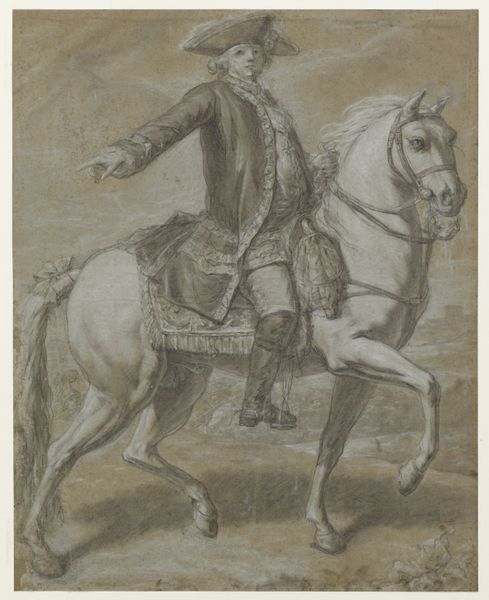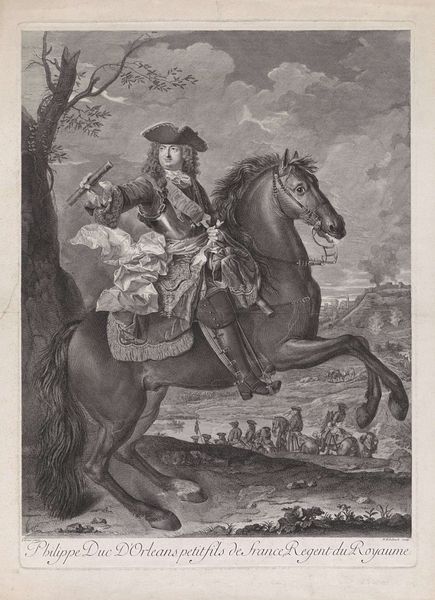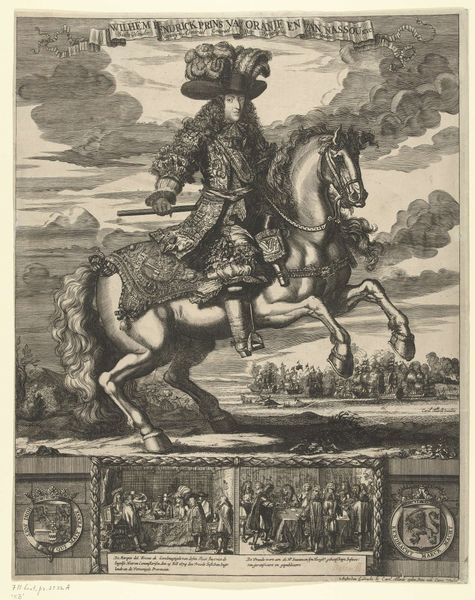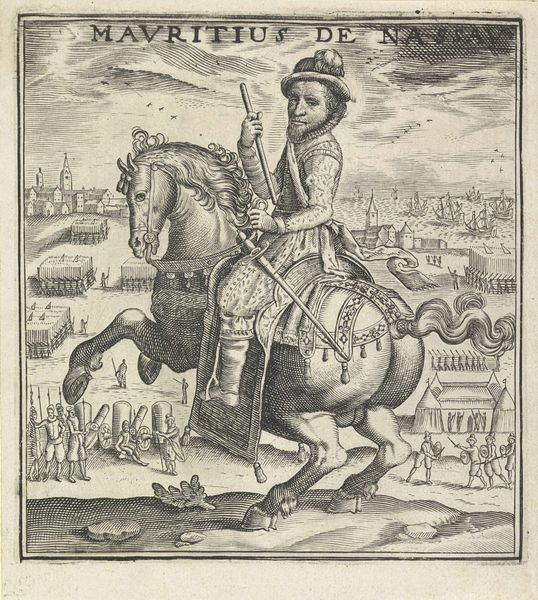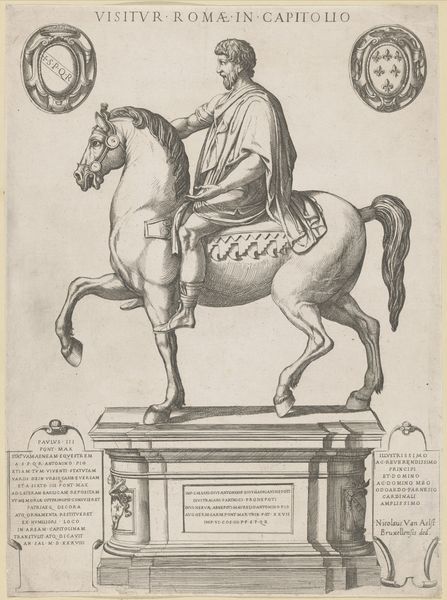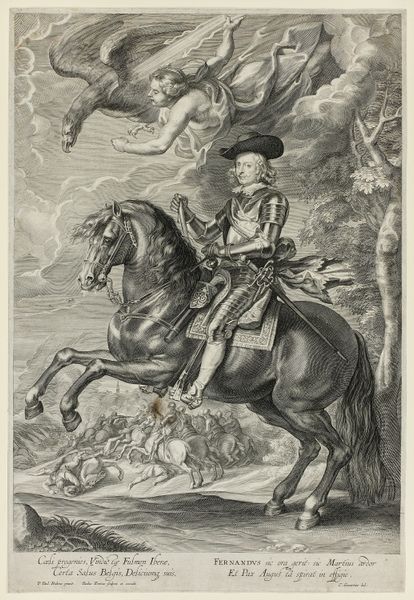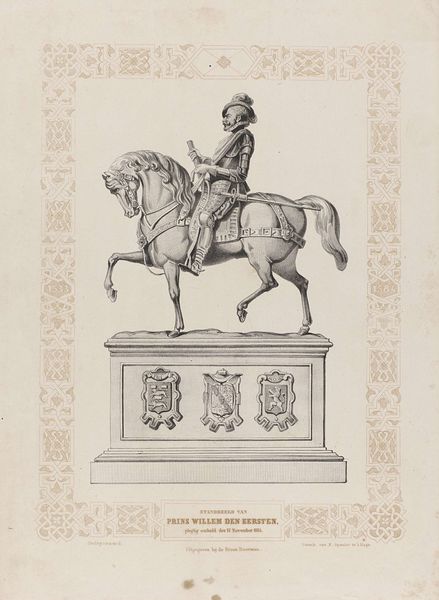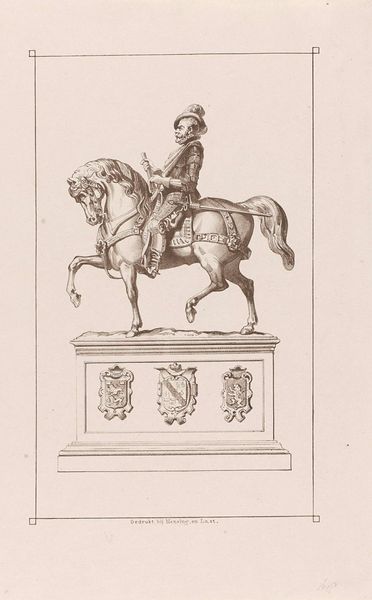
etching, engraving
#
portrait
#
baroque
#
etching
#
old engraving style
#
figuration
#
line
#
history-painting
#
academic-art
#
engraving
#
realism
Dimensions: height 312 mm, width 222 mm
Copyright: Rijks Museum: Open Domain
Curator: Look, isn't it stunning? The etching is incredibly detailed. Editor: Yes, but the overall impression I get is… static. Like a posed photograph from a much later era, only rendered laboriously. Curator: Perhaps. This is Richard van Orley’s "Equestrian Portrait of Emperor Charles VI," dating from somewhere between 1711 and 1732. It’s a baroque piece. Van Orley was known for these grand, academic artworks meant for public display, part of solidifying Charles’s image. Editor: It's fascinating how an etching – a process inherently about multiplication and dissemination – is used to create such an exclusive image of power. The choice of engraving as a medium meant these images circulated widely. What sort of workshops and labour went into creating such detailed plates and large print runs? What paper was employed, and how did its quality affect the reception? Curator: Precisely! Think of the social implications. Equestrian portraits themselves have a rich history; they're always about power and authority. Placing Charles VI in this lineage. The engraving enabled broader viewership compared to unique paintings displayed solely within elite circles. Editor: Did this wide dissemination genuinely affect public sentiment, or did it mostly reinforce the status quo among those already invested in imperial power? Did this availability affect how people viewed their monarch? Or was the average person too occupied to think about imagery such as this? The frame even feels propagandistic in nature... Curator: I see it a bit differently. For the burgeoning middle classes and merchants in urban centers, images like these fostered a connection, however manufactured, to the ruling elite. It normalizes their authority. The choice of such rigid composition seems carefully crafted, designed for controlled interpretation, preventing challenges to that image. Editor: It seems the image does a successful job of blending technique and political statement. What strikes me most is how a simple sheet of paper, transformed through meticulous labor, could serve such a potent ideological function. Curator: A good point to keep in mind, that power isn't just in the subject but deeply embedded in the materials and distribution.
Comments
No comments
Be the first to comment and join the conversation on the ultimate creative platform.

